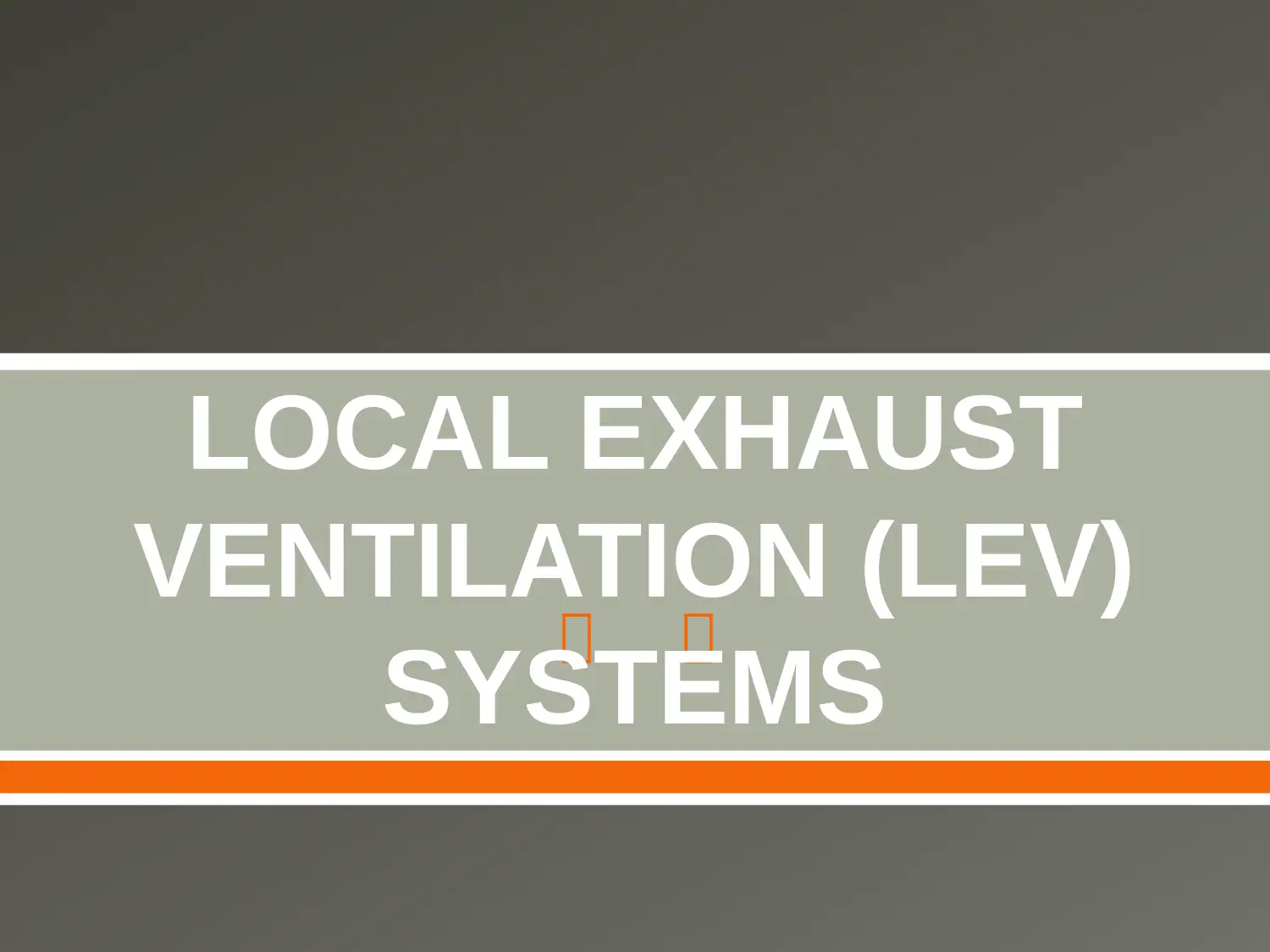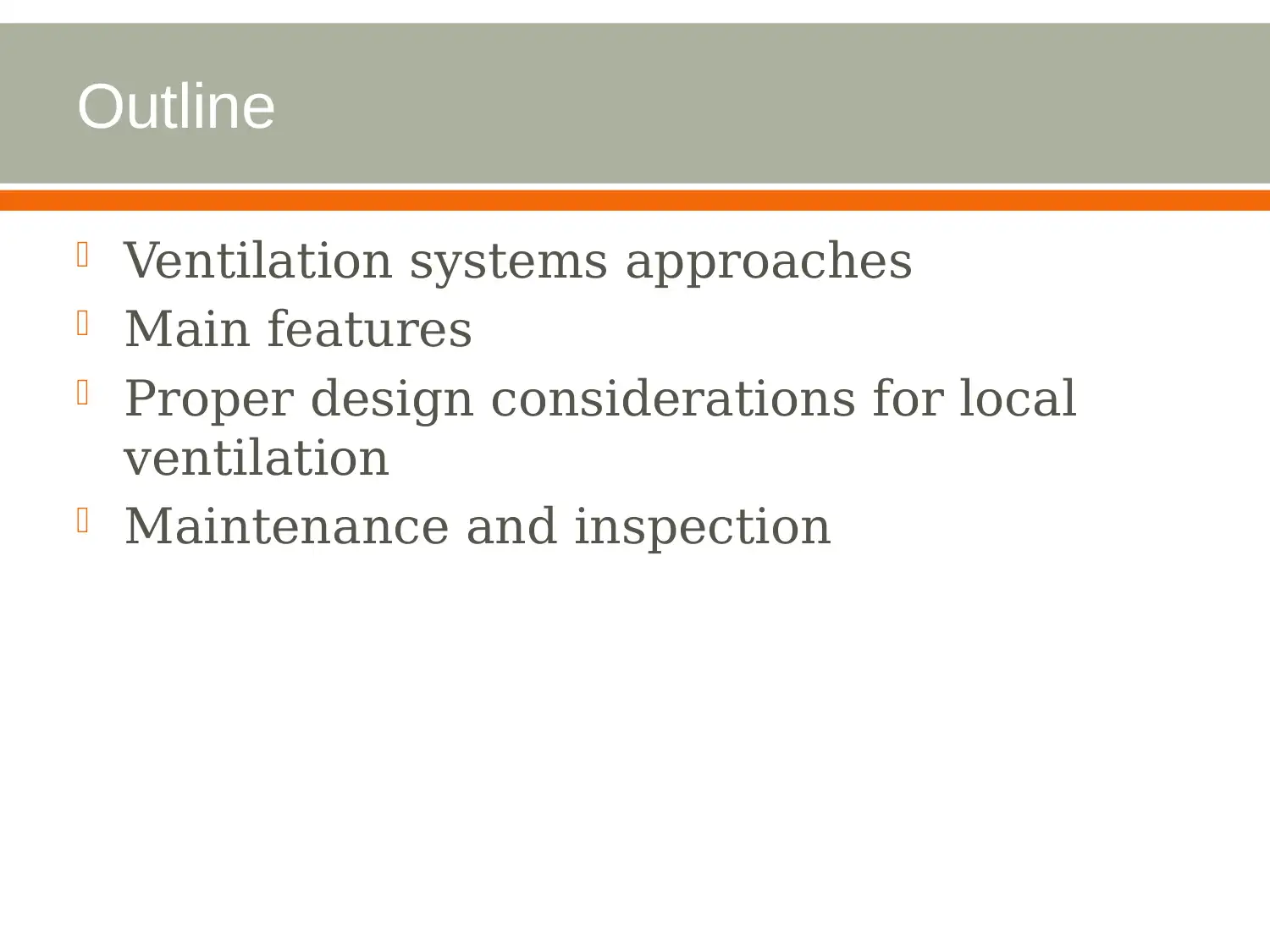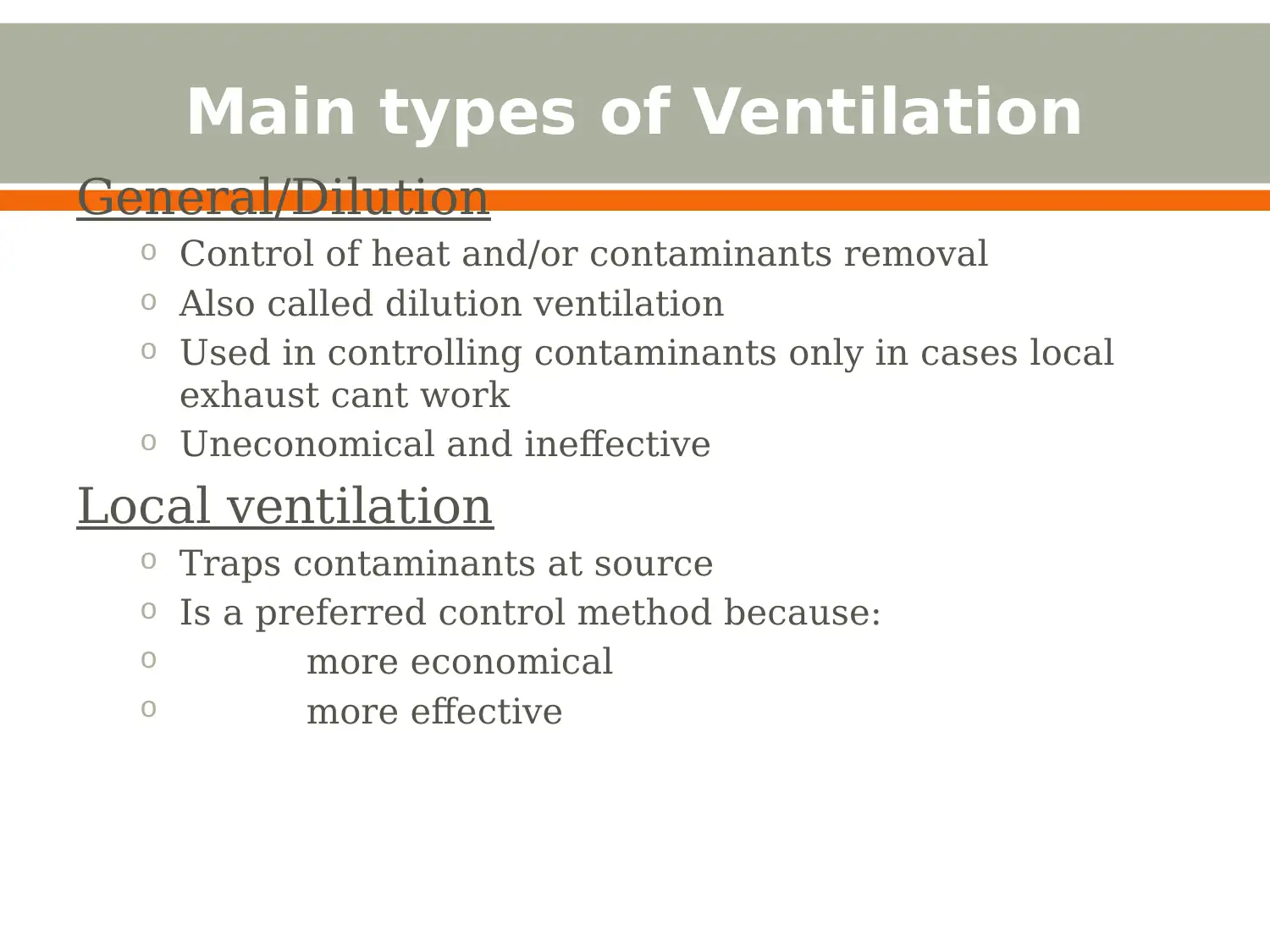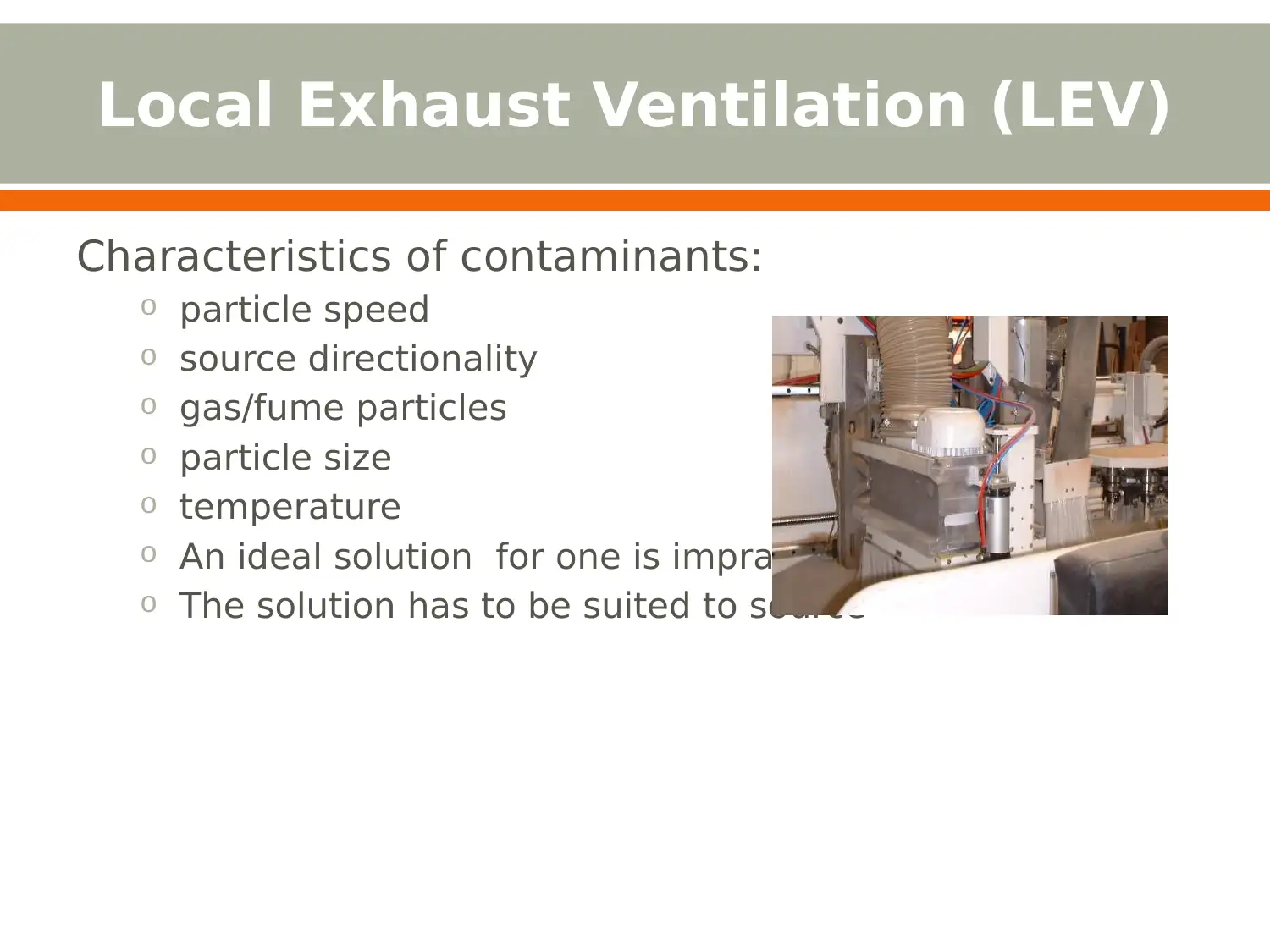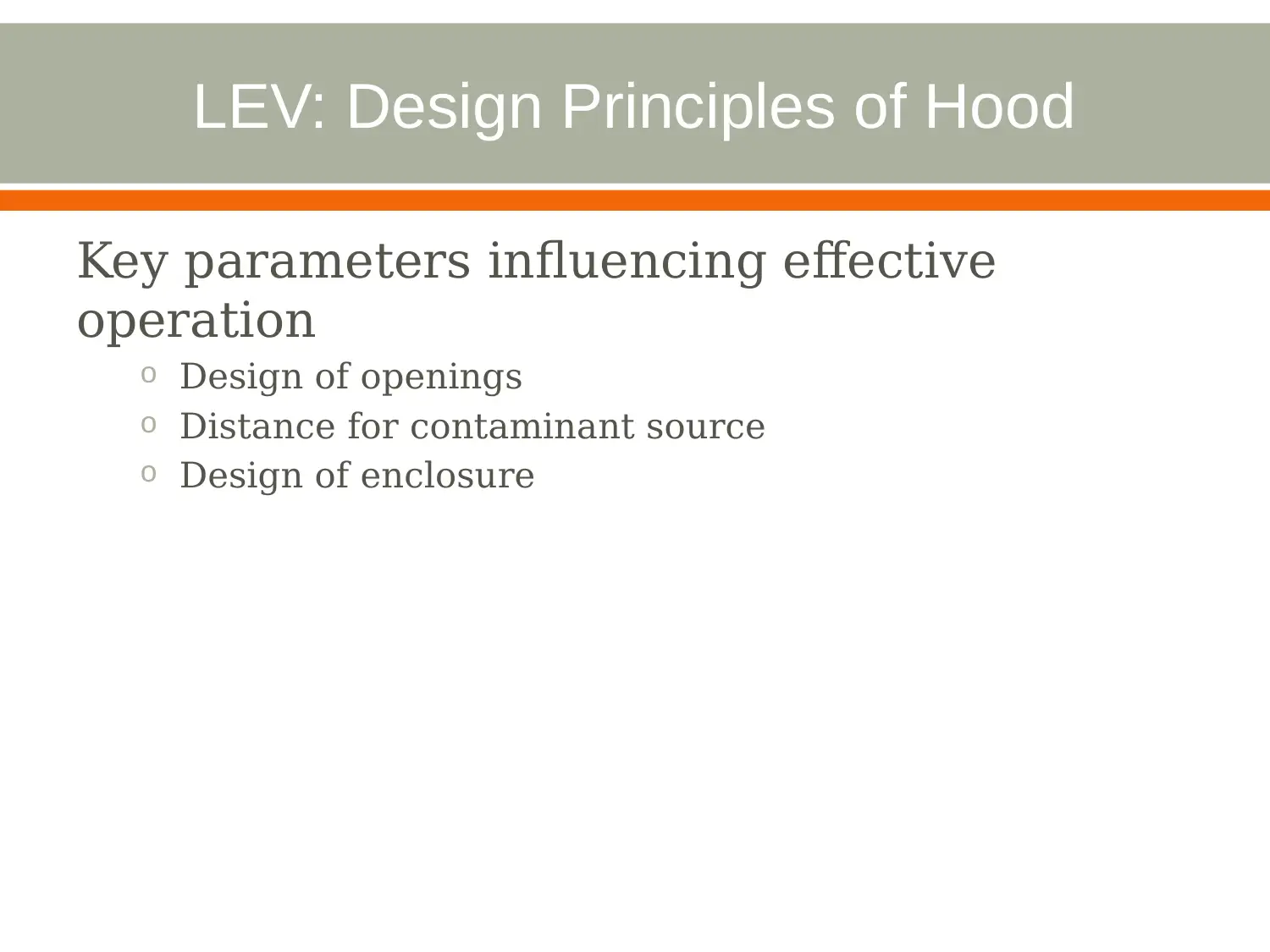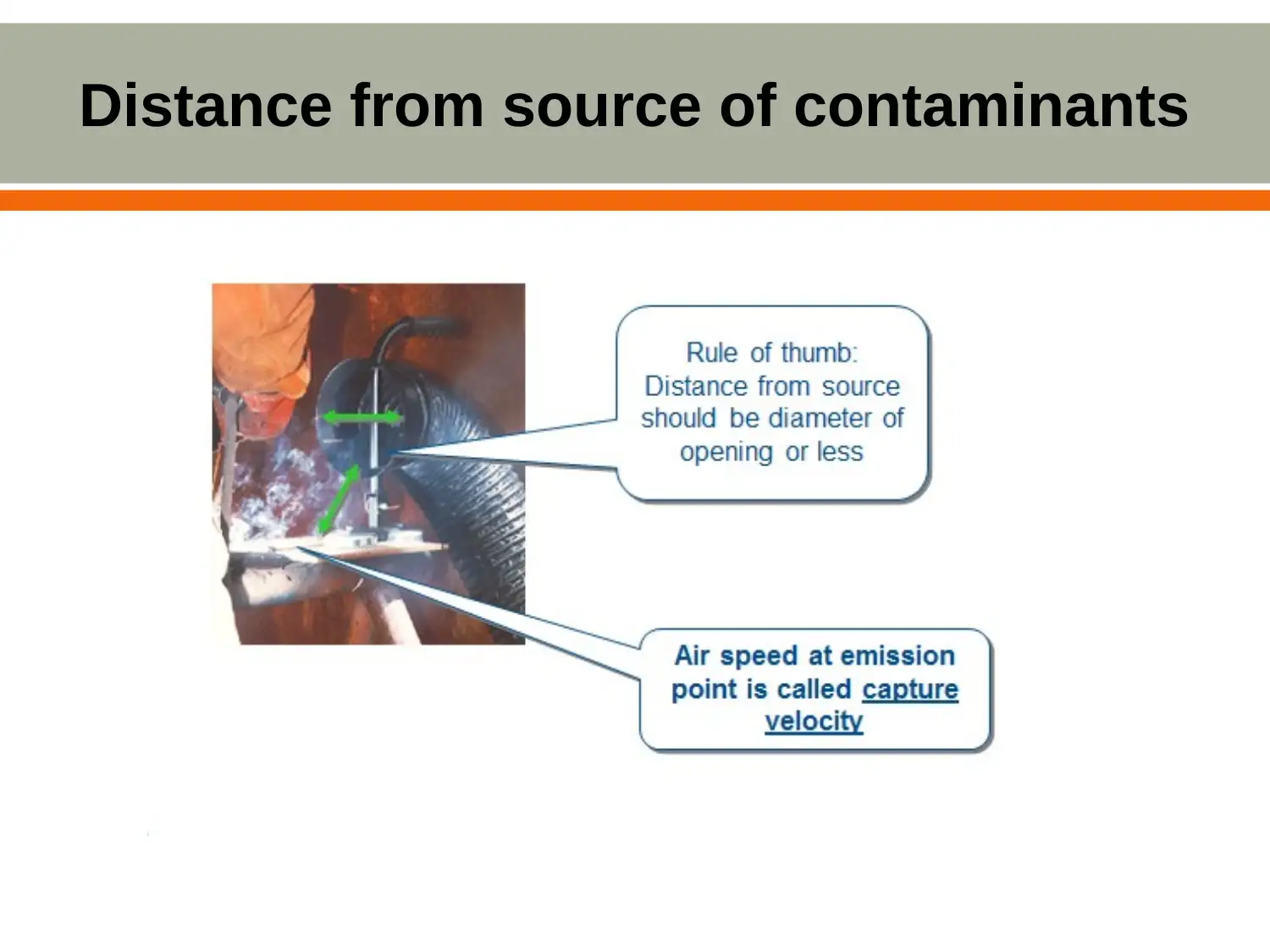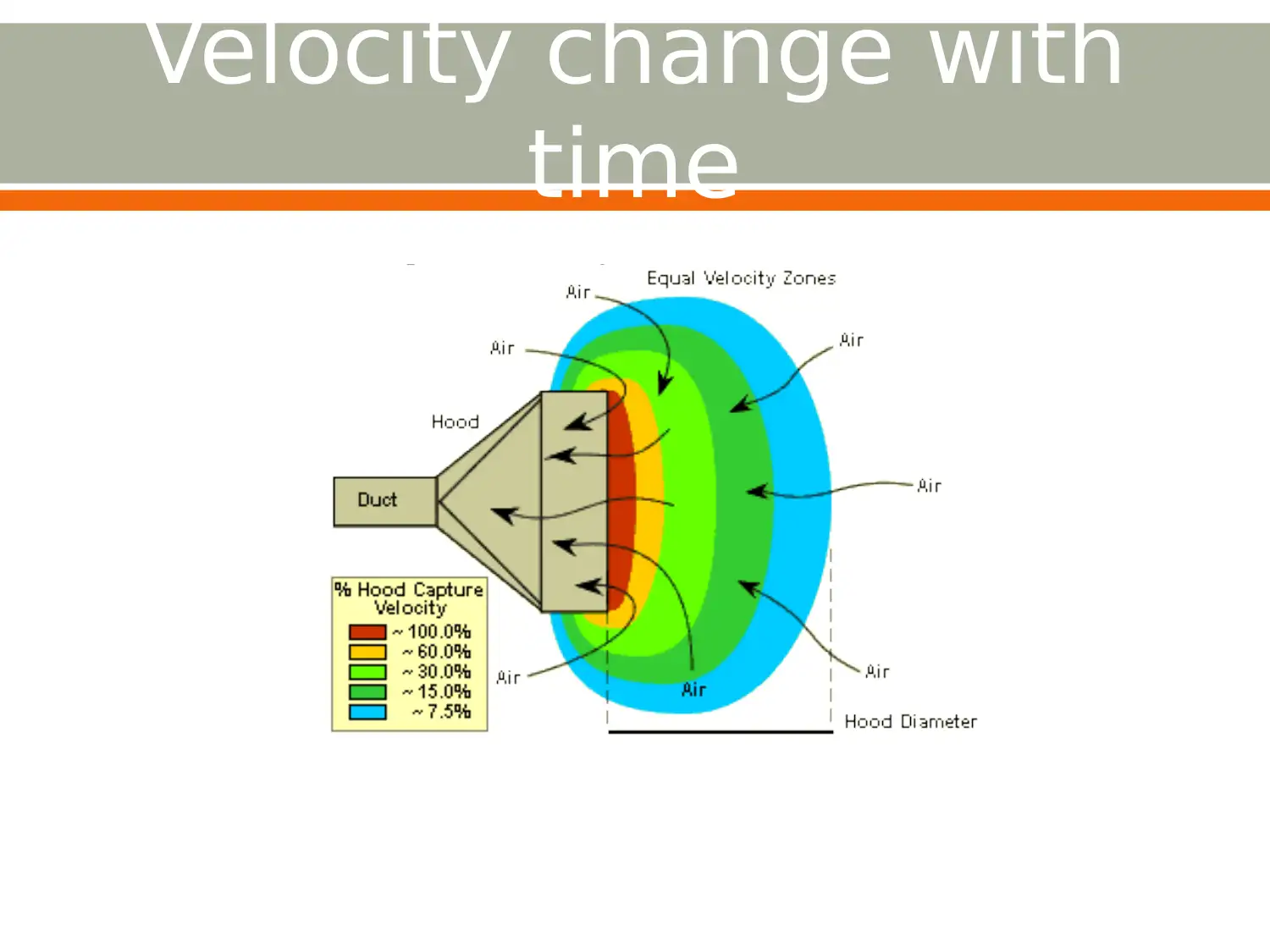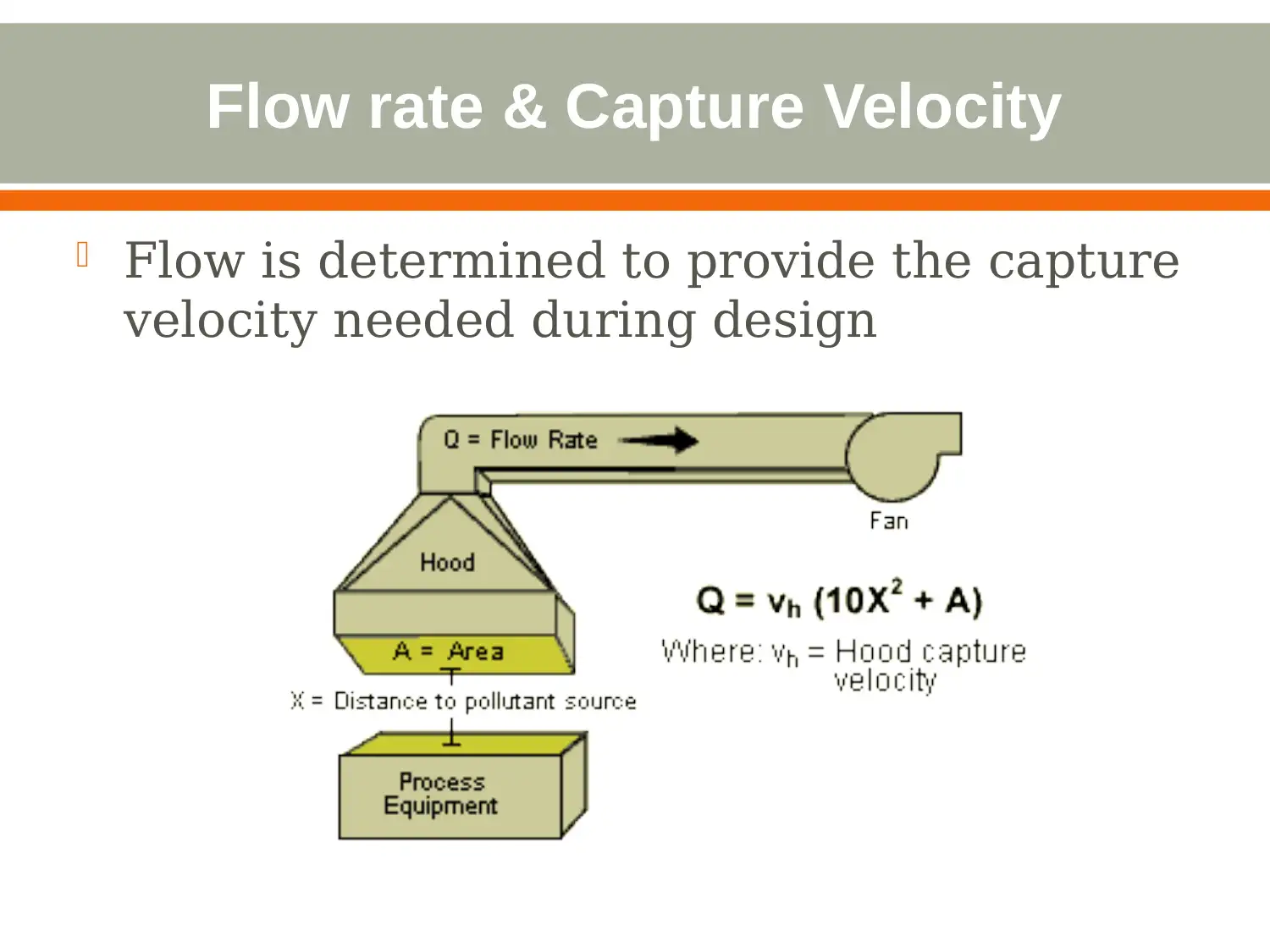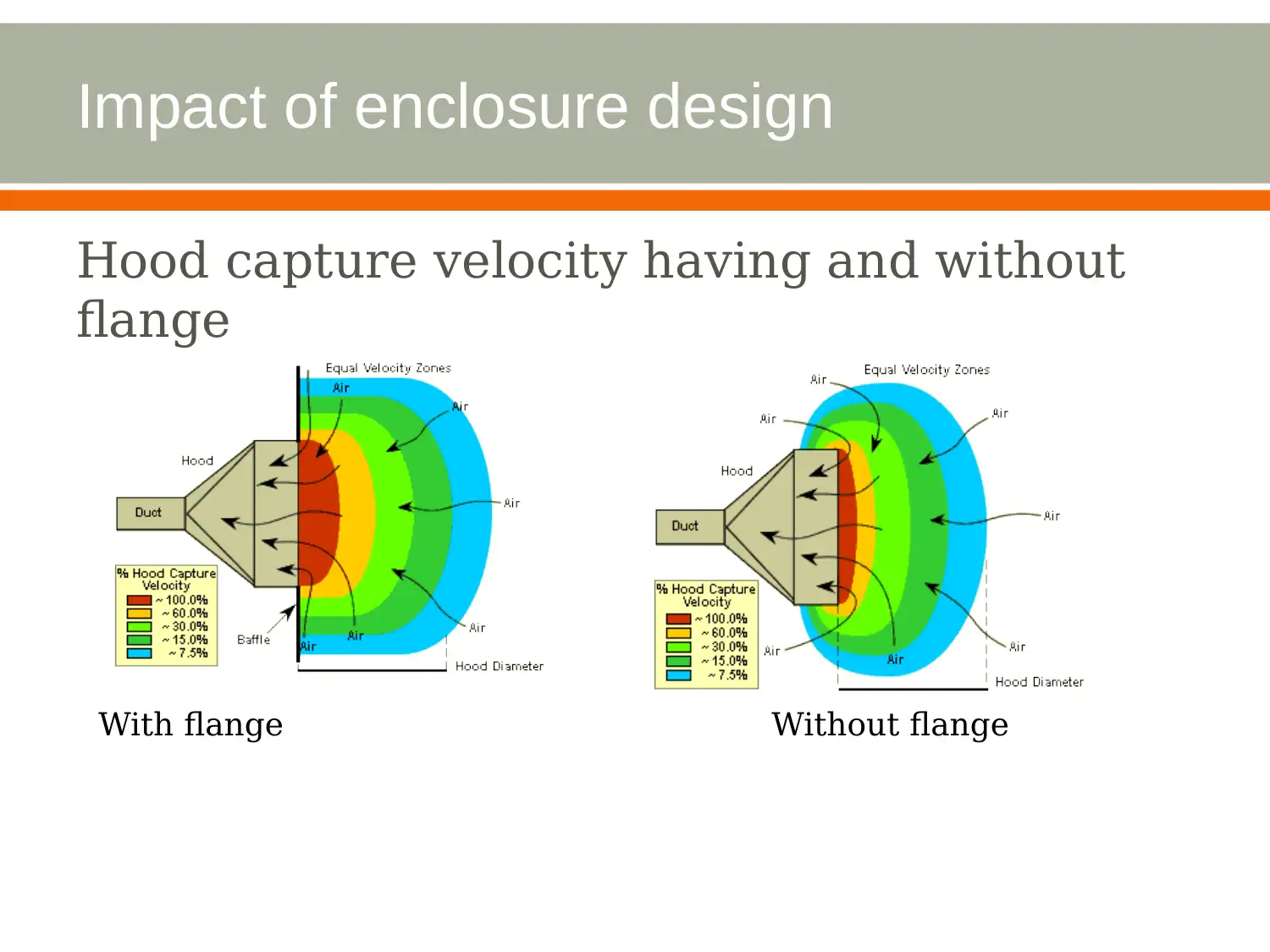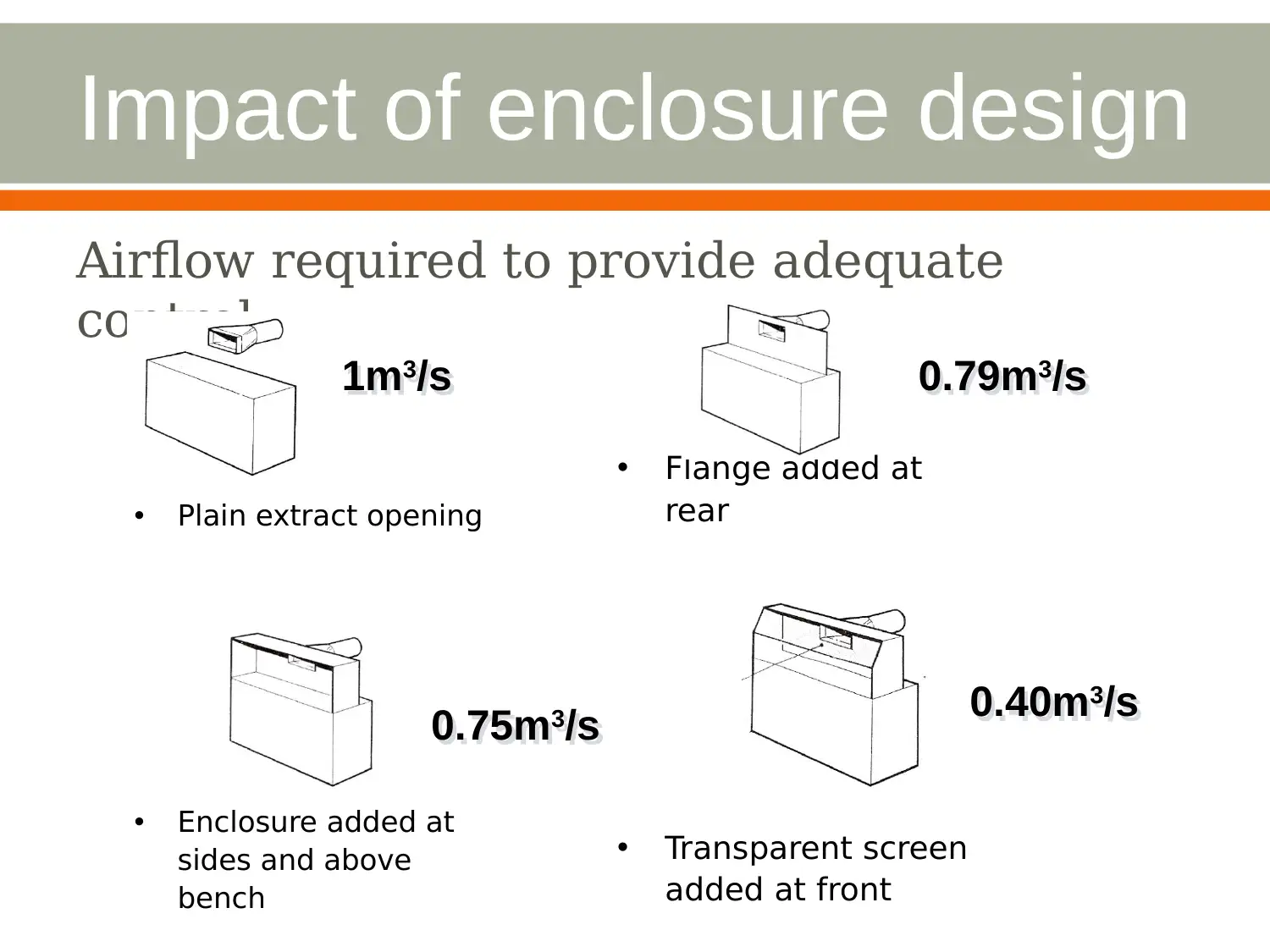LEV Systems: Design, Maintenance, and Performance Analysis
VerifiedAdded on 2021/12/08
|25
|711
|81
Report
AI Summary
This report provides a comprehensive overview of Local Exhaust Ventilation (LEV) systems, detailing ventilation approaches, design principles, and maintenance considerations. It explores the differences between general and local ventilation, emphasizing the effectiveness of LEV in controlling contaminants at the source. The report covers critical aspects of LEV design, including hood design, capture velocity, and the impact of enclosure design on performance. It also addresses common LEV system problems and offers design guidance, referencing the ACGIH manual for recommended designs. Furthermore, it highlights the importance of periodic inspection and maintenance to ensure system effectiveness, with a focus on planned maintenance, routine checks, and tests. The report concludes by summarizing the key principles of LEV systems and emphasizing the importance of regular inspection and maintenance for optimal performance.
1 out of 25
